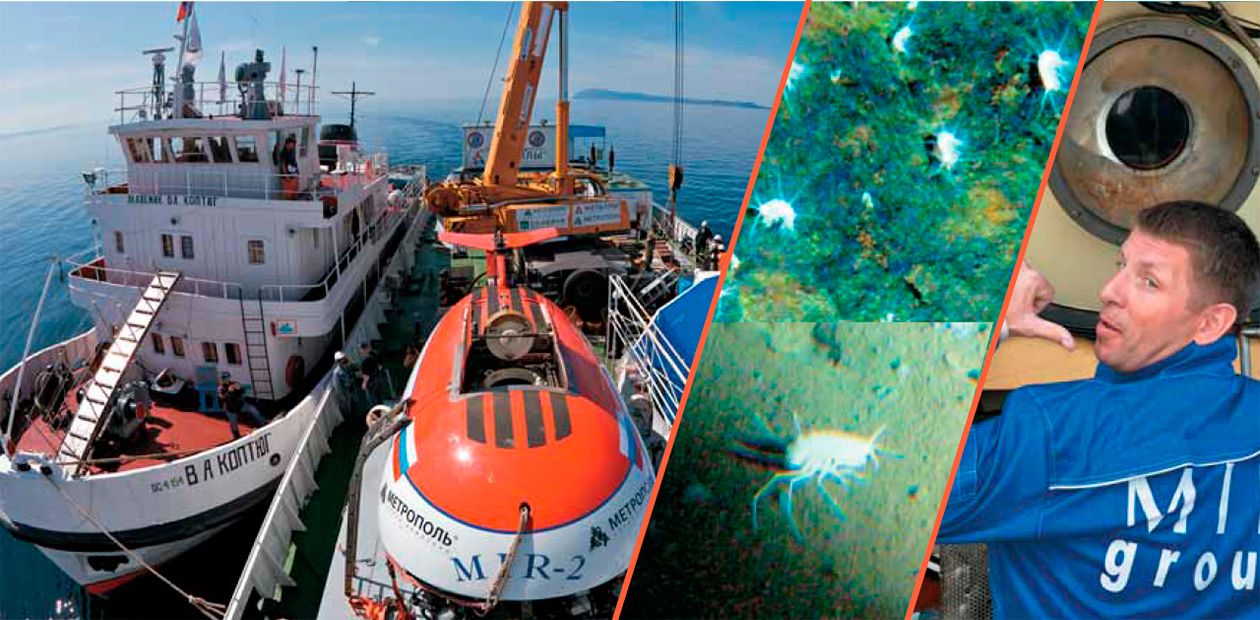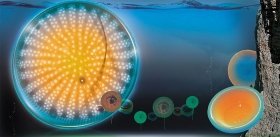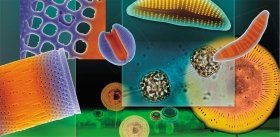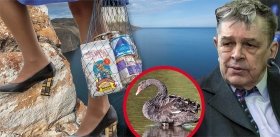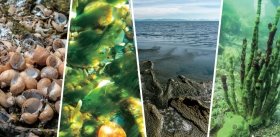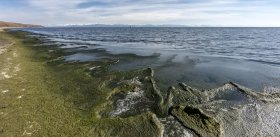MIR Dives. Notes from the Bottom of Lake Baikal
In September 2009 the second season of the International Research Expedition "MIRs on Baikal" was held. The programme of the expedition organized by the Fund for Protection of Lake Baikal was developed by the scientists of the Russian Academy of Sciences.
In three months, about a hundred dives were made. The expedition was charged with hydrogeological and paleogeographical studies; morphology investigation of the Lake bottom; examination of orifices of underwater thermal springs and mud volcanoes as well as accumulations of gas hydrates and oil shows; monitoring the current condition of the Lake's ecosystem; studies of the flora and fauna; and obtaining accurate data on tectonic processing taking place at the Lake bottom.
Well-known singers, writers, and politicians who had had the lucky chance to go down in Baikal depths agitatedly shared their impressions. The author of our "notes from the bottom of Lake Baikal" - biologist A.D. Firsova, researcher from the Limnological Institute SB RAS (Irkutsk).
MIR submersibles and their dives to Baikal bottom have been reported more than once on television and by other mass media; breathtaking underwater landscapes have adorned the pages of journals. Well-known singers, writers, and politicians who had had the lucky chance to go down in Baikal depths agitatedly shared their impressions. And we felt envious of their experience because curiosity about the unknown and capacity for surprise is intrinsic to any person.
...Our dive was scheduled for July 12. A thrilling moment: we put on special outfits, equip ourselves with the travelling requisites (a camera, a pen, a notepad, and a dictaphone) and solemnly (even though with nothing but socks on our feet) go down into the submersible. It feels like a certain ritual is being strictly observed, and no violation, no matter how minor, is welcome. Every dive is a special ceremony, which has become a must. All the crew comes out to see you off and shake your hand...
There is not too much room inside but it is cozy and quiet. Impressive panels with switches, meters, and other instruments tune you to work. We make ourselves comfortable on soft couches in front of small view ports. There are three of us: the smiley seasoned pilot, Hero of Russia Victor Nishcheta in the middle and geologist Oleg Khlystov to the right.
The pilot battens down the hatch. Through the view port we can see the Metropolia deck, faces of the people seeing us off, and the crew in helmets holding on to the ropes. A soft push – and the horizon disappears in the transparent greenish water saturated with light and water bubbles. For some time we stay on the surface – we are letting in ballast water. From the first minute, I begin writing down and taking pictures of everything around, anxious not to miss anything.
...You don’t feel anything unusual during the submergence; the air inside the vehicle is just normal. The blue gradually grows darker; at a 50 m depth it gets pitch dark behind the view port, and the pilot switches on searchlights. Their radiant light as though highlights a magic white Christmas movie: indeed, different-caliber particles of “limnic snow” (falling organic remains) look like snowflakes. Scared transparent baby fish and small humpbacked crustaceans dash upwards, quickly moving their limbs. In ten minutes we hover to take a sample of water. The pilot, dexterously manipulating the “hands” with the help of joysticks, takes in water in a syringe and puts it into the basket fixed outside.
...The dive goes on. Now we are at the foot of the Akademicheskiy Ridge. The lake bottom under us resembles the moon surface, with animal holes for craters and winding traces for enigmatic writings. A multitude of crustaceans, incredibly sophisticated in their appearance, drift past the view port, like small boats. The Baikal oilfish, startled by the searchlight, soars like a butterfly spreading its iridescent transparent “wings” and then shoots up in snaky windings. Shy pigfish freeze, squeezing up against the bottom and fanning their translucent fins.
...Another stop to take ground samples, and we are wrapped in clouds of silt, which languidly come up from the bottom, like in a slow-motion movie. Frightened crustaceans run away. The “hands” are at work again. Gliding along the slope, we are moving towards the top of the Akademicheskiy Ridge. The pebbly slopes testify that millions of years ago this was dry land.
A pleasant surprise is abundance of white and blue deepwater cortical sponges. The “hands” have managed to capture a few rocks with sponges – these will make the day of our colleague biologists.
...Time runs fast, and we should stop for lunch. Since the start of the dive it has become cooler inside the vehicle, so hot tea will be very welcome. The area around the submersible becomes empty – most local inhabitants have hidden from the light, and only big reddish Amphipoda, engrossed in philosophical meditations, saunters thoughtfully. Even its light-colored brother that has come in great hurry wishing to pick a fight fails to divert it. Having met with a resounding rebuff, it disappears as suddenly as it has appeared.
...We are moving on along the slope, pausing from time to time to pick up a stone or a piece of ancient rock. The closer to the top of the Akademicheskiy Ridge, the fewer animals there are but the more often we come across baby Baikal oilfishes. At the summit, 237 meters deep, there is nobody but tiny crustaceans.
...Eight o’clock in the evening – it is time to go up. Reaching the necessary point and pausing about ten minutes to pump out the ballast, MIR tears off from the ground. Again, pearl crustaceans and “snow” particles dash behind the window and the water grows lighter. There we are, floating on the water surface. Even before we are out on the deck, we miss the depth and feel eager to go back!
The pilot carefully wipes away the condensed moisture that has formed during the trip. A few minutes later we see the Metropolia deck and cheerful faces of our friends. The hatch is opened, and for a moment the ears are stuffed up. Sweet home! The limnologists are ready: the samples will be examined – a tiring but extremely important task as it can open a bit wider the door to the underwater world of the deepest and most enigmatic lake of the planet.


